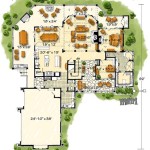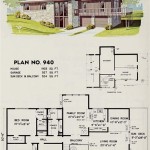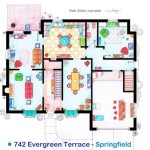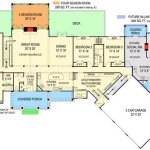What Is Included In a Complete Set of House Plans
A complete set of house plans is a comprehensive collection of documents that provide all the necessary information for constructing a residential building. These plans are not just simple blueprints; they encompass architectural, structural, mechanical, electrical, and plumbing (MEP) details, ensuring a coordinated and code-compliant construction process. Understanding what constitutes a complete set of house plans is crucial for homeowners, builders, and contractors alike. It allows for accurate cost estimation, streamlined construction, and ultimately, a successful building project.
The completeness of a set of house plans directly impacts the efficiency and accuracy of the building process. Incomplete or poorly detailed plans can lead to misunderstandings, construction errors, delays, and increased costs. A comprehensive set ensures that all trades involved in the project have the information they need, minimizing the need for on-the-spot decisions and reducing the risk of costly rework. Therefore, investing in a well-prepared and complete set of house plans is a fundamental step towards a successful and stress-free building experience.
Different jurisdictions may have varying requirements for house plans, so it is essential to verify local building codes and regulations before starting the design process. While the core elements of a complete set of house plans remain consistent, specific details or additional documentation might be necessary to comply with local ordinances. Ignoring these requirements can result in delays, fines, or even the rejection of the building permit application.
Architectural Plans: The Foundation of the Design
Architectural plans form the core of a complete set of house plans, providing the overall design and aesthetic elements of the building. These plans primarily focus on the visual aspects of the home, including the layout, dimensions, and finishes. They are essential for visualizing the final product and ensuring that the building meets the homeowner's aesthetic preferences and functional needs.
The key components typically included in architectural plans are:
Cover Sheet: This sheet contains essential project information, such as the project name, address, client details, architect's contact information, sheet index, and general notes. It serves as a quick reference point for the entire plan set.
Site Plan: The site plan illustrates the location of the house on the property, showing the building's relationship to property lines, setbacks, easements, existing structures, driveways, sidewalks, utilities, landscaping, and other relevant site features. It is crucial for ensuring compliance with zoning regulations and proper site utilization.
Floor Plans: Floor plans are detailed drawings of each level of the house, showing the layout of rooms, dimensions, door and window locations, and the placement of fixtures and appliances. They provide a clear understanding of the interior space and how different areas connect.
Elevations: Elevations are orthographic projections showing the exterior views of each side of the house (front, rear, left, and right). They depict the exterior finishes, roof slopes, window and door styles, and other architectural details. Elevations are crucial for visualizing the overall appearance of the building and its impact on the surrounding environment.
Building Sections: Building sections are vertical cut-through drawings that illustrate the construction details of the house, including wall construction, floor and roof framing, and foundation details. They provide a clear understanding of how the different building components are assembled.
Details: Detail drawings provide enlarged views of specific construction elements, such as window and door jambs, stair details, or foundation waterproofing. They clarify complex construction techniques and ensure accurate execution.
Schedules: Schedules are tables that list the specifications for various building components, such as doors, windows, and finishes. They provide a centralized location for information about sizes, materials, and other relevant details.
Interior Elevations: Interior elevations showcase the vertical surfaces of interior spaces, like kitchen or bathroom walls. They depict cabinetry, tile layouts, and other decorative elements, helping visualize the finished look of these spaces.
Structural Plans: Ensuring Stability and Safety
Structural plans are critical for ensuring the structural integrity and safety of the building. These plans detail the design and construction of the building's load-bearing elements, such as foundations, walls, floors, and roofs. Structural plans are typically prepared by a qualified structural engineer and must comply with applicable building codes and standards.
The key components of structural plans generally include:
Foundation Plan: The foundation plan shows the design and dimensions of the foundation, including footings, foundation walls, and supporting piers. It specifies the materials, reinforcement, and construction methods for the foundation system.
Framing Plans: Framing plans detail the construction of the building's frame, including wall framing, floor framing, and roof framing. They specify the size, spacing, and connections of structural members.
Shear Wall Details: Shear walls are designed to resist lateral loads, such as wind and seismic forces. Shear wall details specify the construction methods, materials, and connections for these critical structural elements.
Beam and Column Schedules: These schedules list the specifications for beams and columns, including size, material, and load-bearing capacity.
Connection Details: Connection details illustrate how different structural members are connected, ensuring that loads are properly transferred throughout the building.
Structural Calculations: While not technically a "plan," the structural calculations are an essential supporting document. These calculations demonstrate that the structural design meets applicable building codes and can safely support the intended loads.
MEP Plans: The Invisible Infrastructure
Mechanical, electrical, and plumbing (MEP) plans address the essential building systems that provide comfort, safety, and functionality. These plans detail the design and installation of the heating, ventilation, and air conditioning (HVAC), electrical, and plumbing systems.
Mechanical Plans (HVAC):
Mechanical plans show the layout of the HVAC system, including ductwork, equipment locations, and control systems. They specify the capacity and efficiency of the equipment and ensure proper ventilation and air distribution throughout the building.
Electrical Plans:
Electrical plans detail the electrical wiring, fixtures, outlets, and panels. They specify the size and type of wiring, the locations of electrical components, and the grounding system. Electrical plans must comply with the National Electrical Code (NEC) and other applicable regulations.
Plumbing Plans:
Plumbing plans show the layout of the water supply, drainage, and waste systems. They specify the size and type of pipes, the location of fixtures and appliances, and the venting system. Plumbing plans must comply with the Uniform Plumbing Code (UPC) or other applicable plumbing codes.
Specific components typically included in MEP plans:
HVAC Layout: Ductwork,registers, thermostat locations, and equipment placement (furnace, air conditioner, heat pump).
Electrical Layout: Location of outlets, switches, lighting fixtures, electrical panel, and wiring diagrams, including circuit breaker information.
Plumbing Layout: Location of water lines, drain lines, waste stacks, fixtures (sinks, toilets, showers), and water heater.
Riser Diagrams: Schematic representations of the vertical runs of plumbing or electrical systems. These diagrams help visualize the flow of utilities throughout the building.
Equipment Schedules: Lists of HVAC equipment, electrical panels, and plumbing fixtures with specifications and performance data.
A well-coordinated MEP plan set is essential for avoiding conflicts between the different systems and ensuring efficient and safe operation of the building.
In conclusion, a complete set of house plans is a complex and comprehensive document that requires expertise in architecture, engineering, and building codes. Homeowners should work with qualified professionals to ensure that their house plans are complete, accurate, and compliant with all applicable regulations. A complete and accurate set of house plans is an investment that pays off in the form of a smoother construction process, reduced costs, and a home that meets their needs and expectations.

What Is Included In A Set Of Working Drawings Best Ing House Plans By Mark Stewart Home Design

What Is In A Set Of House Plans

What Is In A Set Of House Plans

What S In A Good Set Of House Plans Randall Southwest

What Is In A Set Of House Plans

What Is Included In A Set Of Working Drawings Best Ing House Plans By Mark Stewart Home Design

What Is In A Set Of House Plans

What Is In A Set Of House Plans

Home Plans Owner Builder Needs Armchair Blog Build Renovate Repair Your Own Save Money As An

What Is In A Set Of House Plans








